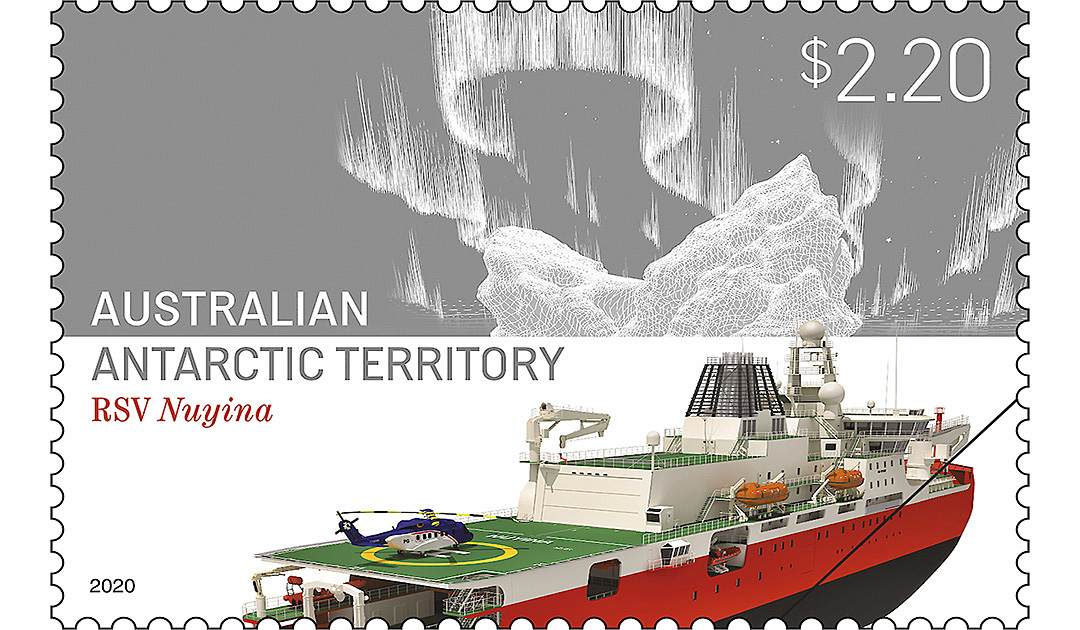
The icebreaking research and supply vessel RSV “Nuyina” will support and supply the Australian stations in Antarctica. To mark the imminent arrival of the Australian icebreaker in its home port of Hobart this year, a new stamp series has been issued by Australia Post. On September 29, 2017, the name “Nuyina” was announced by the Minister of Environment. The name was suggested by students in a competition and is jointly attributed to students at St Virgil’s College in Hobart and Secret Harbor Primary School in Perth.

The four stamps highlight the ship’s state-of-the-art design, its role as an icebreaker and scientific research platform, as well as the indigenous origin of its name and its historical association with other Australian Antarctic vessels.
The word “nuyina” means “southern light” in Palawa Kani, the language of the original inhabitants of Tasmania. The name also links the icebreaker with Antarctica, where the geomagnetic phenomenon, the “Aurora australis” can be observed in the polar sky, as well as with its immediate predecessor, the icebreaker RSV “Aurora Australis”, and with Douglas Mawson’s former Antarctic ship SY “Aurora”.

The new icebreaker’s state-of-the-art design and construction ensure superior endurance and performance for extended research seasons, while providing enhanced cargo capacity to potentially supply two Australian Antarctic stations on one voyage. The ship’s two 55-ton cranes at the bow are an integral part of this capability and are prominent on the stamps.
The scientific trawl deck of the “Nuyina”, which is also depicted on the stamps, will be an essential part of its success as a platform for marine science and sea ice studies. The scientific trawl deck features a flexible design that future-proofs the vessel and allows it to support research that answers today’s critical questions and future needs over the 30-year life of the vessel.

The Nuyina stamps complement a number of other Antarctic-themed stamp issues, including the 100th anniversary of the Australian Antarctic Expedition (1911-14) in 2014, the East Antarctic Deep Sea Creatures in 2017, the Mapping of the Australian Antarctic Territory in 2019 and the Wyatt Earp Expedition in 2020 (1948).
The “Nuyina” is one of the Australian Government’s most important investments in Antarctica within the framework of the Australian Antarctic Strategy and the 20-Year Action Plan.
Heiner Kubny, PolarJournal





